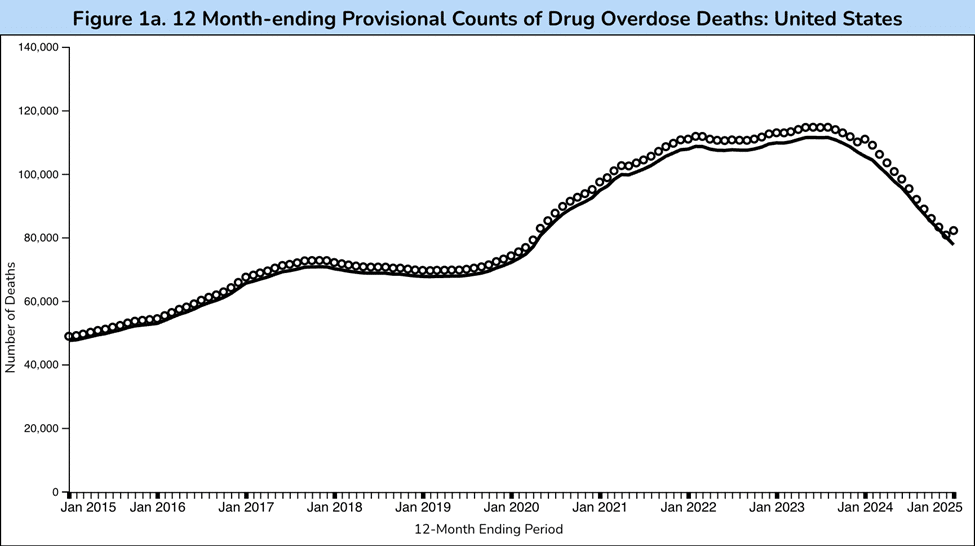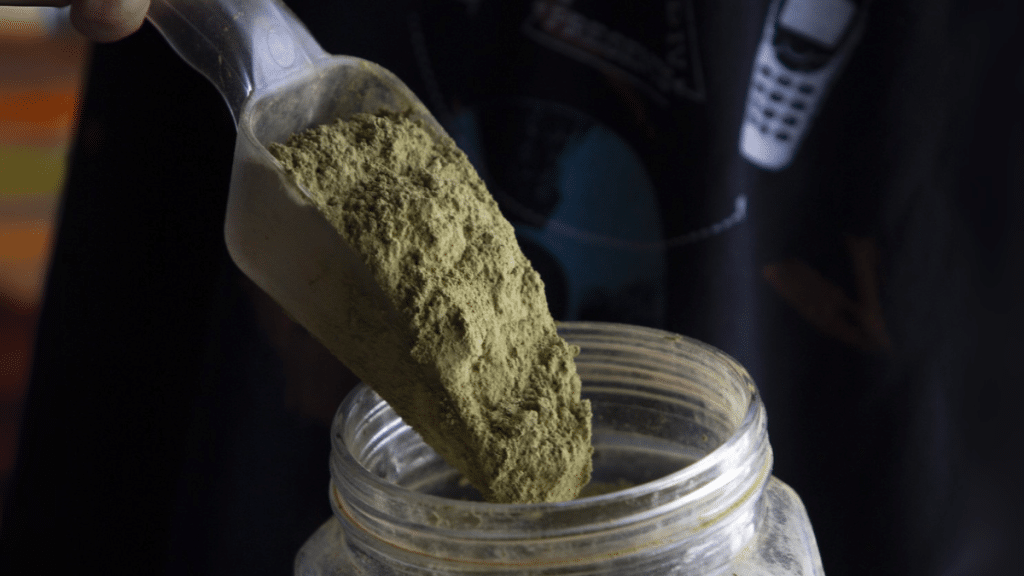Introduction: Reframing 7OH as a PTSD and Pain Management Ally
7-hydroxymitragynine (7OH) is a naturally occurring alkaloid found in the kratom plant, Mitragyna speciosa. While much of the public discourse has focused on its chemical resemblance to opioids, a closer scientific examination reveals a different story: one of a partial mu-opioid receptor agonist that interacts with the body through G-protein biased signaling. This unique pharmacology makes 7OH a compelling candidate for addressing two of the most complex conditions in medicine—chronic pain and post-traumatic stress disorder (PTSD).
Rather than viewing 7OH through the narrow lens of prohibition, we must assess its therapeutic potential in alleviating trauma, pain, and associated mental health burdens.
7OH: Pharmacology with Clinical Relevance

Chemical Class: Indole alkaloid
Receptor Action: Partial mu-opioid agonist
Signaling Pathway: G-protein biased
Receptor Affinity: Up to 46x stronger than mitragynine
7OH exhibits affinity for the mu-opioid receptor but avoids overactivation of beta-arrestin 2, a pathway implicated in respiratory depression and overdose. According to Kruegel et al. (2016), this receptor bias may preserve analgesic benefits while reducing life-threatening side effects.
Unlike morphine and fentanyl, which bind indiscriminately and activate both G-protein and beta-arrestin pathways, 7OH’s selective mechanism could redefine how we approach treatment for both somatic and psychological pain. This pharmacodynamic profile is crucial for patients who require pain relief but are vulnerable to addiction or dissociation, such as trauma survivors.
The Case for 7OH in PTSD Management

PTSD is a neurobiological condition rooted in trauma-related dysfunctions in memory consolidation, fear processing, and stress reactivity. Many patients self-medicate with substances ranging from alcohol to opioids, often leading to worsened outcomes.
Emerging reports suggest 7OH may serve as a harm-reduction tool for trauma survivors:
- Stabilizes mood without cognitive dulling
- Reduces hypervigilance and startle reflex
- Eases nightmares and improves sleep regulation
Studies of the endogenous opioid system in PTSD patients reveal irregularities in how stress and pain are processed. This makes 7OH’s partial receptor activity particularly intriguing: it may fill neurochemical gaps without overstimulating them. Furthermore, the absence of full euphoria or sedative fog allows users to retain presence—a key element in therapies like EMDR, cognitive processing therapy, and exposure-based interventions.
Testimonials from Reddit’s r/7_hydroxymitragynine community echo these outcomes:
“It’s helped with my flashbacks more than any antidepressant I’ve tried. I’m finally sleeping again.” — u/QuietCombatVet
“I was on SSRIs for 5 years. 7OH gave me a calm focus that didn’t make me feel like a zombie.” — u/MindsatEase
These are not isolated anecdotes but part of a growing pattern suggesting 7OH may offer trauma relief without emotional numbing.
Chronic Pain Relief Without Traditional Opioid Risks
Pain and PTSD frequently coexist—especially in veterans, accident survivors, and people recovering from physical or emotional abuse. While opioids have been a mainstay for pain management, their side effects include high addiction potential, cognitive impairment, and deadly respiratory depression.
In contrast, 7OH offers:
- Rapid pain relief via partial opioid receptor activation
- Lower risk of respiratory suppression (G-protein bias)
- No significant sedative or euphoric effects in controlled doses
This has led to a surge in anecdotal reports of individuals switching from drugs like oxycodone or morphine to plant-based alternatives like 7OH. What’s more, this shift appears to be happening with minimal clinical guidance—highlighting a desperate gap in safe, accessible care options.

CDC data supports this alternative pathway. Between 2023 and 2024, overdose deaths dropped by 24%, the most dramatic reduction in a decade. While causation is multifactorial, the rise in harm-reduction tools like 7OH cannot be ignored.
A Closer Look at 7OH’s Functionality Profile
| Metric | 7OH | Traditional Opioids | SSRIs / Benzodiazepines |
| Overdose Risk | Low (minimal beta-arrestin) | High | Moderate |
| Dependency Risk | Moderate (dose-dependent) | High | Moderate–High |
| Cognitive Impairment | Low | High | Low–Moderate |
| Reported Withdrawal | Mild–Moderate | Severe | Moderate |
| Emotional Numbing | None | Moderate | High |
Legal Gray Zone, Clinical Potential
Despite its promise, 7OH exists in legal limbo. Because it is both a natural metabolite of mitragynine and a product of liver metabolism, it is not classified as a synthetic drug. However, DEA scheduling proposals threaten to criminalize patients using it for PTSD and pain relief.
Such a move would:
- Cut off access to a promising therapeutic
- Push patients toward riskier pharmaceutical opioids
- Chill future research on non-lethal, non-euphoric pain management strategies
We must also recognize that scheduling 7OH would criminalize veterans, trauma survivors, and chronic pain sufferers—many of whom are already underserved by existing healthcare systems.
Community Insights: Real-World PTSD and Pain Use Cases
Over 14,000 members on Reddit report daily on 7OH’s impact. Key themes among PTSD and pain patients include:
- Decreased reliance on oxycodone, hydrocodone, and fentanyl
- Improved sleep and lower cortisol spikes
- Enhanced emotional regulation during trauma triggers
“I use it after EMDR therapy—it helps me process without shutting down.”
“It’s the first thing I’ve tried that manages my back pain and PTSD symptoms simultaneously.”
These lived experiences shouldn’t replace clinical trials—but they also shouldn’t be ignored in policymaking. In a vacuum of federally funded research, these forums represent invaluable field data.
Understanding 7OH Dosage and Usage for PTSD and Pain
For newcomers, standard harm-reduction guidelines apply:
- Start low (1–5 mg), observe
- Avoid daily use for extended periods
- Combine with healthy lifestyle habits (hydration, sleep hygiene)
Microdosing 7OH appears to offer cognitive and mood-stabilizing benefits, especially when paired with therapies like trauma-focused CBT or group therapy. Meanwhile, moderate doses may be better suited for managing breakthrough pain without emotional disassociation.
Mechanistic Insight: How 7OH Works in the Brain
7OH’s interaction with mu-opioid receptors allows it to dampen pain signaling and modulate mood without triggering dangerous neural suppression. At the synaptic level, this is because it avoids full activation of beta-arrestin 2, a key protein associated with overdose and respiratory shutdown.
This subtle modulation is promising not just for pain, but also for trauma-related dysregulation. Instead of sedating the user, 7OH allows for emotional processing and physical stability—two pillars of PTSD recovery. Its quick onset and short half-life further make it a viable option for situational use, such as post-therapy decompression or night terrors.
Why Policymakers Should Take Note

The NIH and NCCIH have repeatedly urged investment into non-conventional therapeutics. 7OH fits this criterion:
- Plant-based
- Non-lethal
- Potentially therapeutic in psychiatric and pain contexts
Criminalizing it now would erase a grassroots movement toward safer, science-backed healing tools—and may worsen the nation’s opioid crisis. With millions still dependent on prescription opioids and mental health care infrastructure failing to keep up, 7OH could serve as a vital bridge.
Conclusion: From Criminalization to Compassionate Research
7OH offers something rare: pain relief and trauma stabilization without sedation or addiction for most users. At a time when veterans, chronic pain patients, and trauma survivors are begging for safe alternatives, banning 7OH is not just anti-science—it’s anti-public health.
Regulation must be informed by data—not outdated fears. 7OH deserves further study, not premature scheduling. It may very well be one of the most important plant-derived tools of our generation.
Top 10 FAQs About 7OH
1. What is 7OH?
7OH (7-hydroxymitragynine) is a naturally occurring alkaloid in the kratom plant that interacts with opioid receptors to provide pain relief and mood support.
2. Is 7OH the same as kratom?
No. While 7OH is derived from kratom, it is a specific metabolite with a more targeted and potent effect profile.
3. Is 7OH legal?
7OH exists in a legal gray area. It is not federally scheduled, but may be banned in some states or subject to proposed DEA scheduling.
4. Does 7OH cause euphoria or a high?
Not typically. Most users report clarity and calm without the euphoric effects seen in traditional opioids.
5. Can 7OH help with PTSD?
Many users report relief from PTSD symptoms like nightmares, anxiety, and hypervigilance. More research is needed.
6. Can 7OH replace opioids?
Some individuals use 7OH to taper off or replace opioids with fewer side effects. Always consult a healthcare provider.
7. Is 7OH addictive?
Dependency potential exists but is lower than traditional opioids. Tolerance can build with high or frequent use.
8. How is 7OH taken?
It is typically consumed in capsule or tablet form. Dosages vary and should be approached cautiously.
9. Are there side effects?
Possible side effects include mild nausea, dizziness, or tolerance buildup. Responsible use minimizes risks.
10. Is 7OH safe?
While not risk-free, 7OH appears to have a favorable safety profile compared to prescription opioids. Ongoing studies are evaluating long-term impacts.
